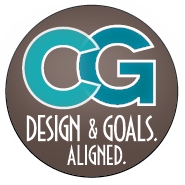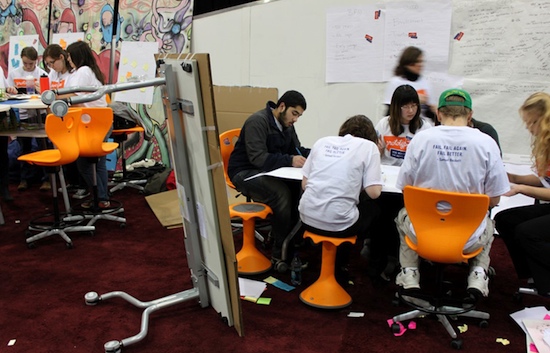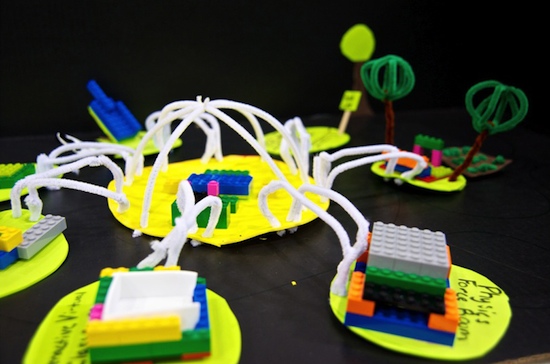Forest Xylophone & Wood Phone
Expandable Puzzle Cutting Boards
Robots with Racquets
In a Zurich lab, at the Institute for Dynamic Systems and Control, elegantly-mobile robotic mini-choppers are developed for exquisite range of motion and response. The "quadrotors"are made to engage in bouncing balls, perform synchronized dances, balance poles, and play piano. Other research at IDSC includes the development of robots capable of learning tasks and developing response via practice, much like in human learning.
Wood Cover for iPad
A beautiful, rollable, wooden cover for iPad 2 is yet another addition to the organic accessories created for digital devices. By Miniot.
See related:
Wood Organizer for Wireless Keyboard and Mouse
Woody by Vanhulsteijn - VLAMBOYANT
A gorgeous bicycle design from Vanhulsteijn.
Five Ways to Fail at Design - Sohrab Vossoughi - The Conversation - Harvard Business Review
As much as the business world seems to admire design innovation these days, very few companies are doing it well. As the founder of a firm that helps businesses innovate, I've watched approvingly as design has gone from a niche topic to the covers of mainstream publications and the keynotes at business conferences. And yet, in 28 years of creative consulting, I have seen far more corporate design efforts fail than succeed.
The arguments in favor of these efforts have been solid: commercial markets are saturated with adequate offerings, consumers are more aware of alternatives and more discerning in their choices, and innovative design is an effective way to differentiate and communicate a brand. But while there are plenty of familiar examples of design-driven market success — Oxo, Apple, Umpqua Bank, Virgin Atlantic and Netflix, to name a few — they are the exceptions, not the rule.
It's common to hear of companies hiring a creative consultancy, applying its recommendations, and yet at the end of the contract, seeing little or no return on investment. The majority of engagements that end this way have resulted in solutions that were never implemented, or were not implemented to their full potential. The design failed, in other words. My observations of attempts at design innovation in the business world suggest that this track record is typical. It can lead thoughtful executives to view design hype with skepticism, and suspect a case of winner's bias: magazines run cover stories about the rare design-driven superstar, but ignore the more numerous losers.
But there are strong similarities among companies that use design effectively, and it's not that they hired the "right" consultancy or believed in the power of design more than their competitors. Design failures are rarely the result of a bad concept or an unwilling client — the companies mentioned above have used a variety of consultancies at crucial junctures in their growth, and most of them still do. What sets them apart is an alignment of expectations. These companies go into the design process with a clear understanding of the role they must play, and a willingness to let their business be transformed by it.
The truth is there's only so much designers can do on their own to make a company successfully innovative. Companies that misalign their expectations — and many do ignore their own part in becoming more innovative — generally fail. They genuinely want good design, and they want it to impact their bottom line, but they want it to take place externally. Their vision of design as a purely third-party service is doomed.
This misalignment expresses itself in many forms. Here are five of the most common ways to fail at design:
Good design can indeed lift a company's performance from lackluster to outstanding, but it's still just one element in the overall system. The key to getting what you need from design is letting it influence, and be influenced by, the other elements in that system. Only when design considerations are integrated into your company's culture as thoroughly as quality, schedule and budget are, will you start moving down the path of design-driven success.
- Refuse to change any other part of your business. Treating design as an add-on can work when a company commissions a "designer series" of products to briefly boost the brand's appeal, but this is hardly what we mean when we talk about innovation saving your business. The smartest companies foster an internal culture of innovation, which creative consultants can support, but only if other aspects of the business — management, development, manufacturing, marketing — are open to change. More immediately, requiring a design team to propose only solutions that can be realized with your current process ensures more of the same.
- Design outside of your innovation space. Designers don't implement solutions, companies do. For that reason, the most innovative solution on earth won't work if it's pursued by a company that can't properly execute it. At Ziba we call this capability the client's "innovation space" — the arena in which they've already proven themselves willing and able to lead the pack. Some companies are technology innovators, others are product innovators or experience innovators. Learning which you are in order to direct later efforts is a crucial first step that most companies skip.
- Try to design for everybody. Design works as a differentiator because it responds to human needs, both functional and emotional. Most of us agree that a Ferrari is beautifully designed, but nobody would say it's for everyone. The same could be true of a minivan. Each succeeds in its market because it delivers to a tightly defined group of users. In a landscape where consumers increasingly demand tailored experiences, failing to identify a clear strategic target is designing to fail. The most useful tool a client can give a consultancy is a well-considered, focused profile of who they're designing for. The least useful is a mandate to create something that appeals to everyone.
- Insist on replicating another company's success. "We want to be the Apple of [insert industry]" might be the single most common request clients make of creative consultancies, and it's certainly one of the most damaging. Good design does more than just serve the needs of its audience, it does so in a way that's true to the company's purpose and values. An Apple-like experience delivered by a company that isn't Apple can't be sustained, because it's not backed up by Apple's culture and resources. The result is an inconsistent experience that feels disingenuous to customers, and shatters their loyalty. This is why "me too" innovation almost never works. Not only does it make you look like a copycat, it shows you don't care about your own brand enough to express it in your user experience.
- Compartmentalize design into isolated tasks. It's tempting to treat design as a menu of services, applying it here and there on bits of a project that need sprucing up. To a skeptical client this can feel economical and controlled, but it cripples the design effort by fragmentation. The best user experiences are integrative; they make sure that every touch point is consistent and logical, building trust from the user, and reinforcing the brand's character. Piecemeal design work creates an incoherent experience that users will ultimately reject.
Sohrab Vossoughi is founder and President of Ziba Design. He holds more than 40 patents, has received ten citations in Business Week magazine for Best Product Design, and is the only industrial designer to have been elected a Global Leader of Tomorrow by the World Economic Forum.
Watery Typography
A beautiful, realistic, typographic image by Craig Ward.
3D Poster: I ♥ NY
Credit: Oded Ezer
Spurlock's Brand Love
Morgan Spurlock, of Super Size Me food documentary fame, and Fast Company teamed up for this photo shoot for the story "I'm with the Brand"—a look at the role of branding messages in media and the relationship between media content and advertising. Spurlock's upcoming film, Pom Wonderful Presents: The Greatest Movie Ever Sold, taglines: "He's not selling out, he's' buying in."
POM Wonderful Presents: The Greatest Movie Ever Sold Trailer from POM Wonderful on Vimeo.
Star Wars & Comics Travel Posters of Justin Van Genderen
Inspired by the thought of what it must be like for a younger audience to watch the older Star Wars movies, Justin Van Genderen created a retro-like set of "travel posters" for the films' planets: with minimalistic forms and stained textures.
For a similarly-inspired travel poster series, Van Genderen took on the locations of popular Marvel and DC comic book hero towns. While the posters for the heroes' metropolises have more detail, the great silhouettes and bold type make these posters equally striking and graphic.
See more on Behance. See also story & more images on Underwire.
Typography of Nancy McCabe
Products of Design: Change through Making
From the School of Visual Art's Products of Design Program:
"Designers have the power
to transform the world.
Products of Design transforms
designers, educating head,
heart and hands to reinvent
systems, create new types
of value, and catalyze positive
change through the business
of making."
Layered Matchbook Letterpress Invitation
Illustrations of Roman Klonek
The illustrations of Roman Klonek are colorful, textural and quirky, with a tinge of a style perhaps reminiscent of art naïf.
Type Glossary, from Typography Deconstructed
Teaching Kids Design Thinking, So They Can Solve The World's Biggest Problems | Co.Design
An outstanding article on utilizing Design Thinking to develop tomorrow's thinkers. Reposted here from Fast Company.
___________________________________________________________________________________________________________________
The next generation will need to be more and more comfortable with problems of dizzying complexity. And design thinking can teach them that.You cannot solve a problem with the same mind that created it. — Albert Einstein
Assessment
The test scores are out again. And once again, American kids aren't doing so well.
You can choose any of the international standardized tests and on average, American children will always be stuck in the middle, compared with their peers in other countries. Leading the pack in test scores are the students in Scandinavian countries, China, Japan, South Korea, and Singapore, with American students always trailing behind. And every time a new batch of test scores are published, you can hear the tapping of keyboards as various authorities opine about the dire state of the American education system.
A Vision
We all recognize a need for massive change in American education, but is our ultimate goal to outrank other countries in assessment tests and to beat the Chinese in math scores? We need to look at the world around us and consider what global problems modern society will need our children to solve.
We need new minds equipped with new ways of thinking.
Our world desperately needs leadership in achieving sustainable social justice, not simply learning the answer to a test question. America needs massive change in our understanding of the learning experience, not simply in our exam results. Simply put, to change the world, we need a generation of new minds equipped with new ways of thinking. We need to drastically shift our conception of education and then completely transform how we facilitate learning.
Future generations will be called to solve some of the most challenging problems ever created and faced by man. Our children must master systems-thinking to envision multiple methods for addressing complex challenges like renewable energy, world hunger, climate change, and ultimately, the design of a better world. They must also possess the compassion to recognize the rising human population and create a world that is inclusive, rather than exclusive.
Design Camp
To find a new set of solutions for our education system, let’s begin by asking the generation that is most affected by the current state of education. Prototype Design Camp was created by Christian Long, a visionary educator, to introduce and infuse design thinking skills into the K-12 landscape.
Students learned collaboration rather than information consumption.
"Last February, in the middle of an historic winter storm across the US, 30 high school students from 14 different schools in Ohio trekked their ways through the snow and ice to participate in the first Prototype Design Camp. They came fully engaged in helping the world answer one of the most perplexing challenges facing them: How do I engage and navigate through this fast changing world?"—Christian Long
As described on the website, Prototype Design Camp was an “innovative three day design camp [that] brought together…students and professional mentors to collaborate in an intense design challenge to address real world problems.”
The students—from public schools, private schools, and a career-technical high school—worked in groups with other students that they had never met before. Mentors worked with the groups, allowing students to learn through behavior modeling and collaboration rather than information consumption.
The results were a creative array of news networks, school designs, and student movements, but the most compelling outcome was the student experience itself. Reflections at the end of the conference from students included tremendous gratitude, a deep interest in the design process, and most importantly, a motivation to thoroughly create change.
Entanglement
According to the mysterious and beautiful properties of Quantum Entanglement, if you take any two objects and entangle them, you create an inseparable relationship between them. If you were to separate two entangled electrons, even sequester them at opposite sides of the universe, measuring one electron will instantaneously affect the other.
The Prototype Design Camp experience left us with the conviction that together, we can entangle design and learning and thus invent a new literal, visual, and spatial language. This language will give us the lexicon to support a radically new map and experience for learning and teaching. As we stand at the threshold decade of the third millennium, generations of world-changing minds are at stake.
[Photo courtesy of Christian Long]




















































